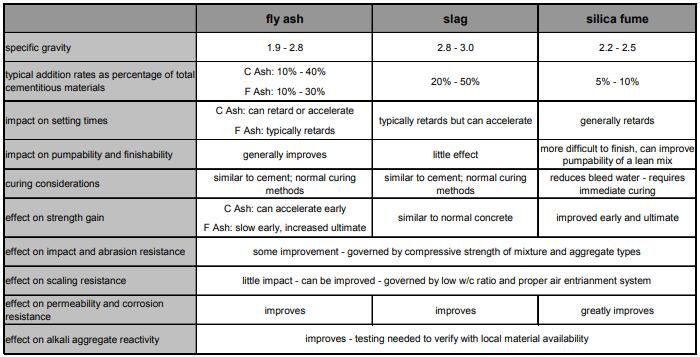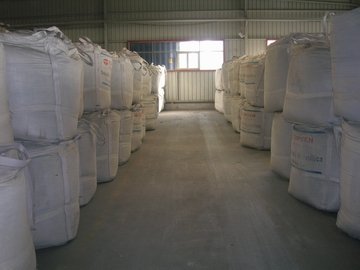Supplementary Cementitious Materials (SCM) are added to concrete mixtures for various reasons including improving durability, decreasing permeability, aiding in pumpability and finishability, mitigating alkali reactivity and improving the overall hardened properties of concrete through hydraulic or pozzolanic activity or both. SCM are added to concrete in addition to or as a partial replacement of Portland cement or blended cements and are usually considered as a part of the total cementing system. The use of these materials in concrete has also grown considerably over the past 30 years in that they are typically byproducts of industrial processes and their use can contribute to environmental and energy conservation practices.
The most common SCM used in the ready-mixed concrete market include:
– Fly Ash
– Ground Granulated Blast Furnace Slag
– Silica Fume
– Calcium Carbonate
– Natural Pozzolans: such as calcined clays, shale and metakaolin
Fly Ash:
Fly Ash is the most widely used SCM in concrete and is a byproduct of coal combustion in electric power generating plants. The use of fly ash in concrete can contribute to LEED points through local materials, recycled contents and innovation credits. Fly ash can compensate for fine materials that may be lacking in sand quantities and can be very beneficial in improving the flowability and finishability of concrete mixtures. The two designations for fly ash used in concrete are Class C and F and are described in ASTM C618.
Class C Ash: high calcium contents with low carbon and good pozzolanic and cementitious properties lend this material to use in higher performance mixtures where early age strength is important.
Class F Ash: low calcium ash effectively moderating heat gain during concrete curing and therefore ideal for mass placement conditions and high strength mixtures or use in hot weather climates; Also provides good sulfide and sulfate resistance to concrete through same capacity as Type V (CSA Type 50) cement.
Slag:
Ground granulated blast furnace slag (GGBFS) is manufactured through the process of rapidly quenching molten slag produced during iron making. This granulated material is ground down to powder form and acts with hydraulic properties when combined with water. GGBFS is also sometimes referred to as slag cement. Concretes made with slag cement will usually exhibit higher compressive strengths, better durability and lower permeability compared to portland cement concrete. GGBFS for concrete must meet the specifications of ASTM C989 (CSA A23.5).
Silica Fume:
Also referred to as microsilica, this byproduct material is used as a pozzolan and is manufactured from the reduction of high purity quartz with coal in an electric arc furnace. Silica fume can also be provided in a liquid form and is an extremely fine material. Appropriate safety precautions must be employed when using silica fume. These materials are defined within ASTM C1240 (CSA A23.5) and are typically used where a high degree of impermeability is required. The use of silica fume in concrete will create the effect of the mixture becoming sticky and appropriate adjustments may be required.
Fly Ash, Slag and Silica Fume with Impact on Concrete Properties:






